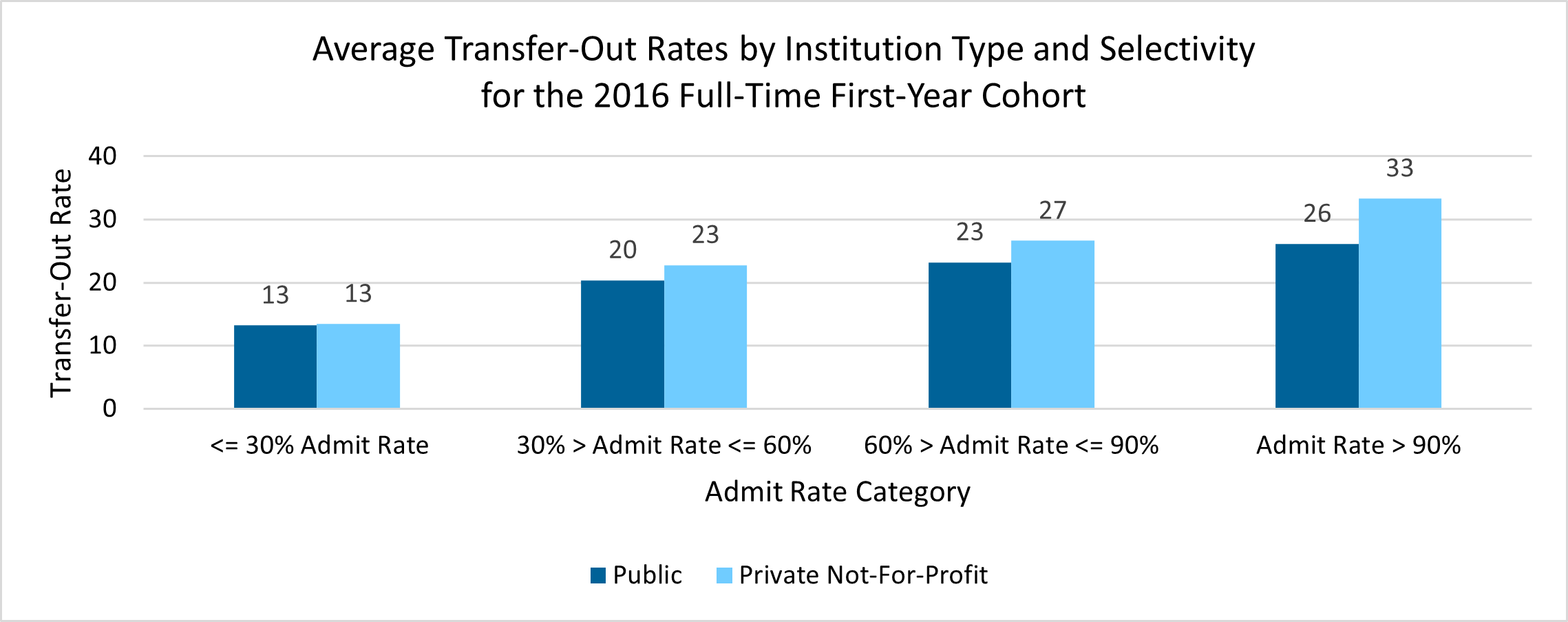Beyond Your Campus: Understanding Student Mobility
Transfer-out rates refer to the percentage of eligible students in an institution’s full-time, first-year cohort who, after receiving substantial preparation, enroll at another eligible institution before earning their degree. For enrollment leaders, transfer-out rates provide insights into student mobility, completion, equity, and admissions policies. By monitoring these rates, institutions can streamline transfer pathways and enhance student support services.
According to data from the National Center for Education Statistics, of the 1.6 million students that entered a four-year institution as a full-time, first-year student in 2016, 211,000 (24%) transferred to a different institution between 2016 and 2022. However, large variations in transfer-out rates exist by institution type and selectivity.
• Across public and private not-for-profit institutions, transfer-out rates increase as admit rates increase.
• Among both public and private four-year institutions, those that admitted less than 30% of applicants in 2016 had the lowest transfer-out rates.
Compare this data to the transfer rates on your campus, and explore opportunities to:
• Establish campus partnerships to track and review student transfer trends.
• Analyze themes in student majors or background that might create opportunities for early intervention.
• Refine partnerships with area institutions to support a smooth transition for students when transfer is appropriate.
